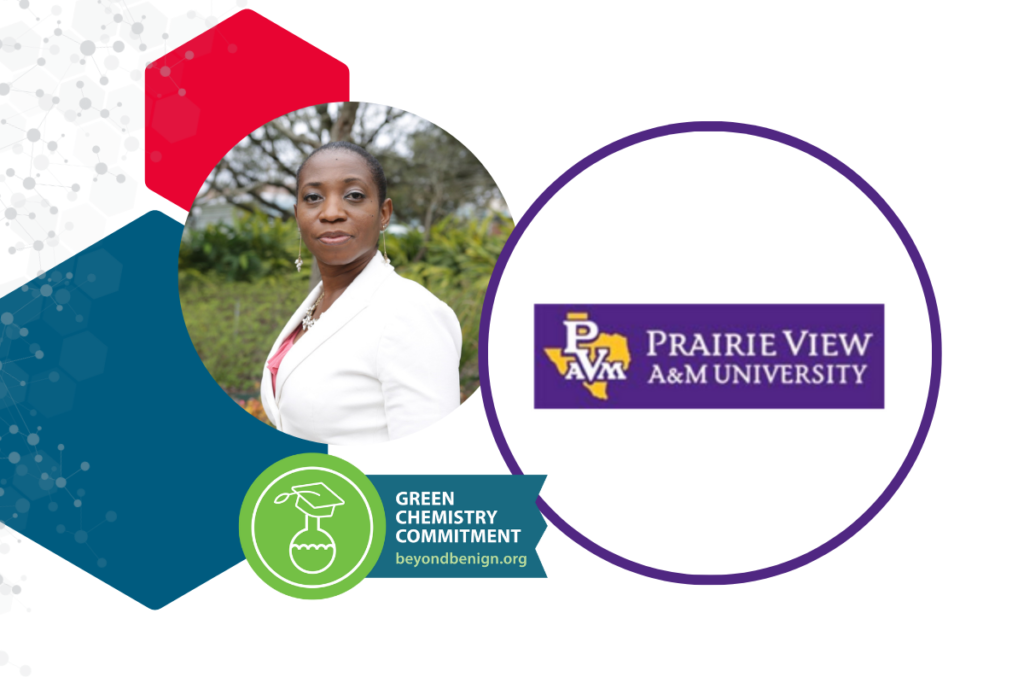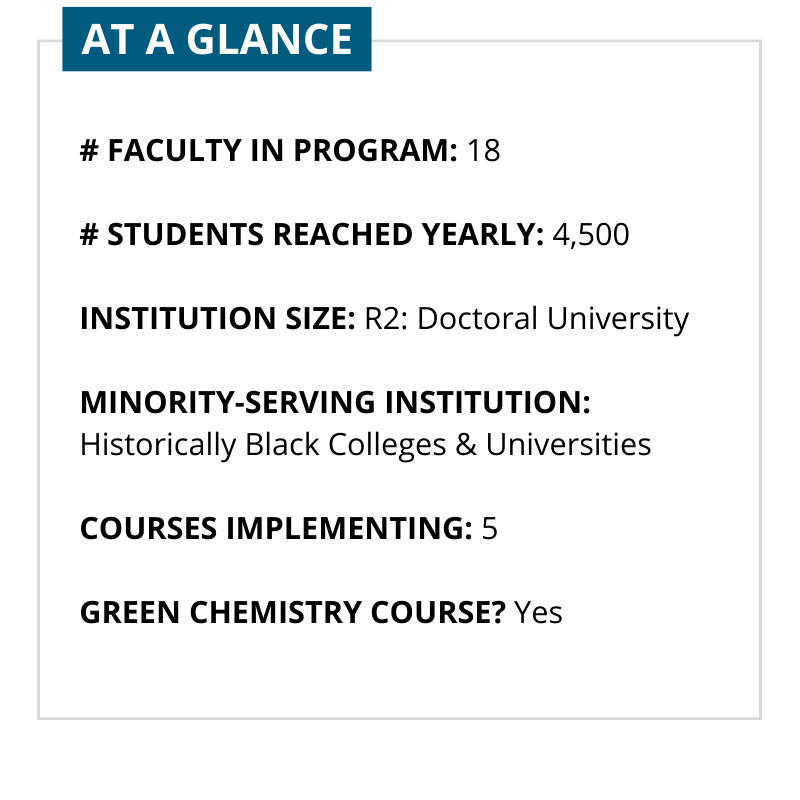An interview with Andrea Oseolorun

 In 2013, Beyond Benign created the Green Chemistry Commitment (GCC) program with guidance from higher education institutions as a framework to unite the global Green Chemistry community. The GCC goal is to infuse Green Chemistry into Higher Education and give scientists the required skills to design processes and products less hazardous to human health and the environment.
In 2013, Beyond Benign created the Green Chemistry Commitment (GCC) program with guidance from higher education institutions as a framework to unite the global Green Chemistry community. The GCC goal is to infuse Green Chemistry into Higher Education and give scientists the required skills to design processes and products less hazardous to human health and the environment.
Beyond Benign has partnered with companies including Dow, MilliporeSigma, and Biogen to further its mission to empower educators to transform chemistry education for a sustainable future. Support from these partners has allowed Beyond Benign to create resources, foster relationships, and provide essential funding to educators, all in an effort to grow and strengthen the Green Chemistry education community.
Prairie View A&M University is a Dow academic partner and GCC signer. Discover the university’s story in our interview with Dr. Andrea Oseolorun.
How did you first learn about the Green Chemistry Commitment?
PVAMU Chemistry heard about the GCC through an invitation to attend a meeting with Beyond Benign, Dow and the College of Engineering, which was held on our campus in the spring of 2020.
What was the process of becoming part of the GCC community like for you?
Signing on to the GCC was easy for us. We had permission from our department head to complete the necessary documents and then it was forwarded to the Dean for final signatures. It all happened in a day.
How has being part of the GCC impacted your institution and you as a faculty member?
Signing on to the GCC has opened so many doors for our department, including new collaborations, new research directions, increased interest in more green and sustainable chemistry projects and proposals, more publications targeting green chemistry journals, and a new green chemistry course based on resources provided by Beyond Benign and other partners.
As a scientist from an interdisciplinary background in a department filled with Ph.D. chemists, [the GCC] has given me a voice and a way to show what I can offer to the academy. It has also allowed me to introduce my students to a subject that is of particular interest to me coming from an environmental science background.
How has being part of the GCC community impacted your students and their ability to prepare for career competitiveness?
My students have been very receptive to our green chemistry infusion topics, and my first-year courses also received B-Global designation to help students become more active and informed global citizens.
Students are excited to see how chemistry is applied to solving everyday problems, to explore tangible examples of environmental issues and how chemistry can solve these problems. One example is the overproduction of fast fashion and the environmental problem with the disposal of that waste. That was obscure to students but after learning about it, they wanted to commit to recycling and reusing more products. Many were amazed by the carbon footprint of their daily lives and began thinking more about energy efficiency. Others began to understand sea level rise and greenhouse emissions as urgent problems to be solved. The end result is they are talking more about the issues and making connections to their chemistry coursework, as well. This will serve them in their future careers as they learn applications of science solving real global issues.
How has being part of the GCC helped your institution?
Our Department has benefited a great deal. This work has given us avenues to expand in research and supported our efforts toward effective and relevant teaching. Recruitment efforts for new majors and graduate student research enquiries are increasing.
The University has the distinction of being the first HBCU to sign on to the GCC and I am very proud of that. The Texas Defender regional newspaper published a story on that achievement.
What student outcomes have you observed since instituting Green Chemistry practices and principles?
I’ve always envisioned creating an environmental chemistry course in my department, and the encouragement I’ve received from the GCC community has built my confidence to move forward with the project. I have found my feet and my voice, literally, and I am looking forward to bigger things because of the assistance from my colleagues in the GCC. I have experienced a genuine sense of belonging as a scientist that was not there before.
It’s also helped me connect with new colleagues and students across the globe. I’ve met students in Berlin who are doing great work to advance green chemistry in the University. I have talked with colleagues in Canada and multiple states across the U.S., and I hope to work on research projects in the future.
How do you envision the GCC community supporting the future green chemistry goals of your institution and training of your students?
We hope to always have a forum to share our ideas and also learn from the community. We would like to see more outreach to support our efforts to increase awareness of the benefits of this new, more sustainable enterprise and how vital green chemistry education is to student success.
Why do you think other institutions should join the GCC?
They would be giving their students access to priceless knowledge. They’re also joining a community of like-minded individuals with a passion for teaching, and preparing global citizens and future scientists with the necessary skills to understand and solve globally relevant issues that affect all people.
What advice would you give another faculty member about advocating for green chemistry on their campus?
Start small with what is already available. Every effort, no matter how small, is relevant. Don’t be afraid if you are the only one in the beginning. Also stay connected with the community by attending the monthly connections when possible, and reach out if you need help. The online community has a wealth of information and support is always just an email away.
